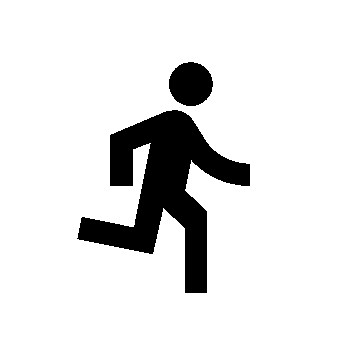More about Streetie
⌖ Navigate like a local
Explore the city like you were born here. Streetie is designed to provide you with the safest and most scenic routes through your city. Our mission is to make urban exploration more enjoyable by helping you avoid high-crime areas and guiding you through the most beautiful parts of town. With Streetie, you can tailor your journey according to your preferences for safety and aesthetics.
Read our terms and privacy policy
⌖ Where does the data come from?
Streetie uses publicly available data provided by city governments. We take these data and make a heatmap which represents either the crime level or beauty score. You can see this heatmap displayed on the app. We update these heatmaps periodically with the latest data.
Heatmaps are generated as a straightforward and transparent representation of the open data sources. We don’t do any data processing, weighting by density, nor do we prioritize any features (like specific crimes). We do this to insure our methodology always returns the best results and to make sure our own opinions do not affect the city routing. We do not accept funding to bias the map towards or away from any areas.
Crime data
Crime data for each city encompasses the latest calendar year of reporting. Streetie uses crime data which is documented with geographic coordinates. For example, crime point locations for Washington, DC can be found on Open Data DC. These are further broken down by crime type, which can be filtered in the app. Crime points are averaged over the timeframe and the point density is displayed on the map as a gradient—red being the highest density.
Every city will have different levels of crime density, so we can’t provide universal labels for the colors. The four unit color scale is equally distributed between minimum and maximum density.
Live crime data
Live crime data is also sourced from public data repositories and is queried in 48-hour periods. This is updated every time you open the app.
Crimes are marked at the coordinate provided by the city, which are usually fuzzed a little to preserve confidentiality. The marker will have an icon indicating the weapon, if applicable.
Some jurisdictions have a delay in filing for some crimes. Homicides or sexual assault, for example, are rarely posted the same day as these cases often require more investigation. This is why you might see a lot of new crimes in the morning, as more cases occur at night, which will take a few hours to be documented.
Beautiful data
How do we decide how beautiful an area is? This is the most common question we get about the app.
Beauty is subjective, so we take into account over 10 different features which are uncontroversially beautiful. We give the option to filter if you would like to prioritize greenery, water, or points of interest in your beauty calculation. Some points are not beautiful on their own, but are good proxies for beauty. Streateries, for example, might indicate people like being outside in that area.
Each of these feature placements are sourced from public data coordinates, and we use the same method as crime mapping to display the beauty score. The point density is displayed on the map as a gradient—blue being the highest density.
Every city will have different beauty score distributions, so we can’t provide universal labels for the colors. The four unit color scale is equally distributed between minimum and maximum density.
Scenic features we use
Public parks
National parks
Community Gardens
Shorelines
Marinas
Beaches
Historic Landmarks
Public Art
Memorials
Streateries
Museums
If you have a good idea for a measure of an area’s beauty, please send us a tip at dev@streetie.com.
⌖ How does routing work?
Using public data, a heatmap is generated representing either the crime level or beauty score. The innovative routing algorithm then uses these values to prioritize which roads to take you down. The stronger you decide to weigh your route, the more likely the route will take you down a street which is optimized for low crime/high beauty rather than speed.
Your route will always take you towards your destination. It will never double back through a more beautiful area, only shift the main path.
We make our data methodology public so that you know our routes will never be determined by the opinions of the development team.
⌖ Supported Cities
Streetie is in BETA and is constantly adding new cities! However, curating and refining each new dataset takes some time. If you want your city to be next, send a note to dev@streetie.com.
To get notified when new cities and features are added, download the app and click on the city in the top left of the map. Sign in and click the button to get the latest Streetie news. You can also follow us on X (Twitter) @streetieapp.
Currently live in
Washington, DC 🇺🇸
Next up
New York, NY
Los Angeles, CA
Chicago, IL
Philadelphia, PA
San Francisco, CA
Phoenix, AZ
Boston, MA
Miami, FL
Honolulu, HI
And then
Paris, France
London, England
⌖ Streetie Dev
Streetie was developed by Ben Turley in 2024 during his first year of medical school at the Georgetown University School of Medicine. He continues in the role as owner and lead developer.
Please address any inquiries regarding app development to dev@streetie.com.
⌖ Services & Partners
Basemap
Google Maps Embed API
Routing
Graphhopper ♡
Analytics
Google Analytics
Firebase Crashlytics
⌖ Contact
Customer Support
friend@streetie.app
Press, Business, & Development
dev@streetie.app


